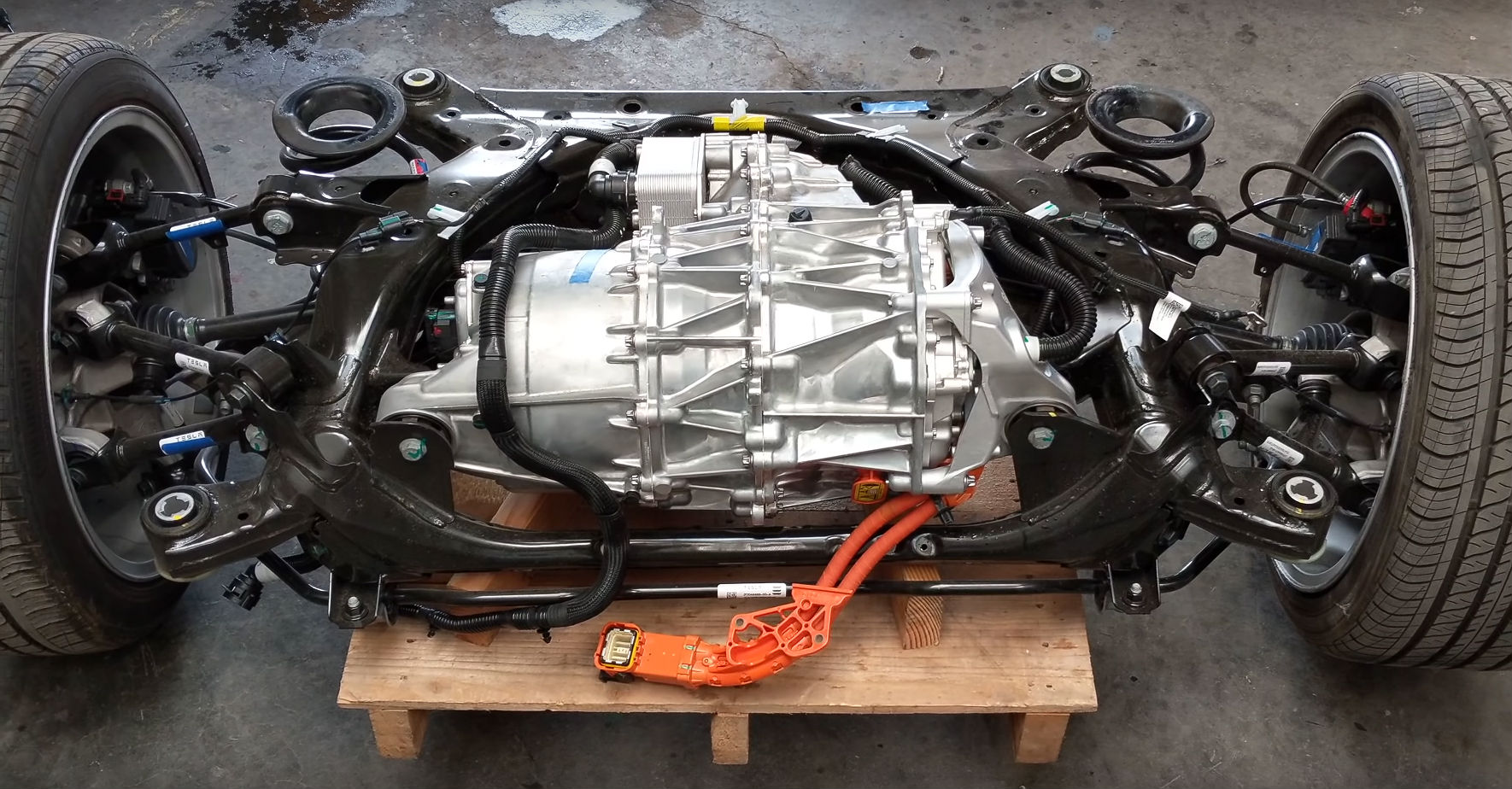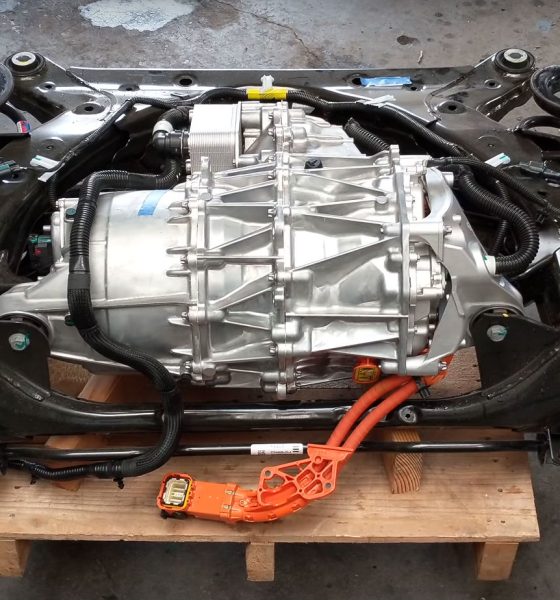

News
Tesla should just amplify its electric motors’ sounds to invoke an EV’s true ‘soul’
Teslas may be among the most formidable vehicles on the road today, but even as each of the company’s electric cars continually leaves behind a trail of victims on the drag strip, there is a good chance that an old anti-EV talking point will get thrown out by critics: “electric cars have no soul.” This is due in no small part to the fact that electric cars are silent when they operate, making them feel almost like a roller coaster when they accelerate.
Yet inasmuch as this is cool in itself, a good number of vehicle enthusiasts would argue that there is just something primal and intimate about driving and the roar of an engine. Few sensations match the feeling of speeding through a road with a nicely growling engine beneath the hood, after all. This is likely one of the reasons why some carmakers like Porsche and Ford have taken it upon themselves to create sounds for their all-electric vehicles.
The Porsche Taycan, being the first modern all-electric vehicle from the sports car-maker, features a deep, futuristic whine that was specifically tuned by the company. While it costs $500 extra, Porsche’s “Sport Sound” option does provide some much needed “soul” to the Taycan, making it feel very similar to its gas-powered siblings.
The same is true for the Ford Mustang Mach-E, one of the most highly-anticipated EVs from veteran automakers. Ford was so intent on providing an aural experience to its drivers that the company is coming up with a feature that broadcasts engine noises into the Mach-E’s cabin. This, similar to the Taycan, is done to ensure that customers get the classic “Mustang experience” when operating the all-electric crossover.
Tesla’s electric cars, on the other hand, are known for being extremely silent. Government-mandated pedestrian noisemakers aside, Tesla’s electric cars like the Model S could accelerate from 0-60 mph without so much of a whine. The Model 3, when in Track Mode, has been noted to exhibit an audible whine of sorts from its electric motors. And this, in a way, lies a missed opportunity for Tesla.
The fact is that Tesla’s electric motors actually sound really good. When activated to full power, Tesla’s electric motors produce a sound that is nothing short of futuristic, and not at all out of place in sci-fi franchises like Star Wars. It does, in more ways than one, invoke that all-too-elusive “soul” referenced by avid drivers. That high-pitched whine that sounds like a jet engine taking off embodies the raw power of electric cars, after all, not unlike how a V8 or V12 invokes the ferocity of an internal combustion engine.
More importantly, it is a genuine sound that is coming from actual electric motors, not something manufactured like the Taycan’s Sport Sounds or the Mach-E’s broadcasted noises in the cabin. If Tesla could come up with a way to amplify the sounds of its vehicles’ electric motors to the point where it is audible both within the cabin and perhaps even outside, then even the “EVs have no soul” argument would likely fall flat. Such an update, if any, would likely result in more Teslas getting driven just a little bit harder than usual.
Hear the raw sound of a Tesla electric motor in the video below.
The sound of a Tesla motor from r/Damnthatsinteresting

Elon Musk
Starlink passes 9 million active customers just weeks after hitting 8 million
The milestone highlights the accelerating growth of Starlink, which has now been adding over 20,000 new users per day.

SpaceX’s Starlink satellite internet service has continued its rapid global expansion, surpassing 9 million active customers just weeks after crossing the 8 million mark.
The milestone highlights the accelerating growth of Starlink, which has now been adding over 20,000 new users per day.
9 million customers
In a post on X, SpaceX stated that Starlink now serves over 9 million active users across 155 countries, territories, and markets. The company reached 8 million customers in early November, meaning it added roughly 1 million subscribers in under seven weeks, or about 21,275 new users on average per day.
“Starlink is connecting more than 9M active customers with high-speed internet across 155 countries, territories, and many other markets,” Starlink wrote in a post on its official X account. SpaceX President Gwynne Shotwell also celebrated the milestone on X. “A huge thank you to all of our customers and congrats to the Starlink team for such an incredible product,” she wrote.
That growth rate reflects both rising demand for broadband in underserved regions and Starlink’s expanding satellite constellation, which now includes more than 9,000 low-Earth-orbit satellites designed to deliver high-speed, low-latency internet worldwide.
Starlink’s momentum
Starlink’s momentum has been building up. SpaceX reported 4.6 million Starlink customers in December 2024, followed by 7 million by August 2025, and 8 million customers in November. Independent data also suggests Starlink usage is rising sharply, with Cloudflare reporting that global web traffic from Starlink users more than doubled in 2025, as noted in an Insider report.
Starlink’s momentum is increasingly tied to SpaceX’s broader financial outlook. Elon Musk has said the satellite network is “by far” the company’s largest revenue driver, and reports suggest SpaceX may be positioning itself for an initial public offering as soon as next year, with valuations estimated as high as $1.5 trillion. Musk has also suggested in the past that Starlink could have its own IPO in the future.
News
NVIDIA Director of Robotics: Tesla FSD v14 is the first AI to pass the “Physical Turing Test”
After testing FSD v14, Fan stated that his experience with FSD felt magical at first, but it soon started to feel like a routine.

NVIDIA Director of Robotics Jim Fan has praised Tesla’s Full Self-Driving (Supervised) v14 as the first AI to pass what he described as a “Physical Turing Test.”
After testing FSD v14, Fan stated that his experience with FSD felt magical at first, but it soon started to feel like a routine. And just like smartphones today, removing it now would “actively hurt.”
Jim Fan’s hands-on FSD v14 impressions
Fan, a leading researcher in embodied AI who is currently solving Physical AI at NVIDIA and spearheading the company’s Project GR00T initiative, noted that he actually was late to the Tesla game. He was, however, one of the first to try out FSD v14.
“I was very late to own a Tesla but among the earliest to try out FSD v14. It’s perhaps the first time I experience an AI that passes the Physical Turing Test: after a long day at work, you press a button, lay back, and couldn’t tell if a neural net or a human drove you home,” Fan wrote in a post on X.
Fan added: “Despite knowing exactly how robot learning works, I still find it magical watching the steering wheel turn by itself. First it feels surreal, next it becomes routine. Then, like the smartphone, taking it away actively hurts. This is how humanity gets rewired and glued to god-like technologies.”
The Physical Turing Test
The original Turing Test was conceived by Alan Turing in 1950, and it was aimed at determining if a machine could exhibit behavior that is equivalent to or indistinguishable from a human. By focusing on text-based conversations, the original Turing Test set a high bar for natural language processing and machine learning.
This test has been passed by today’s large language models. However, the capability to converse in a humanlike manner is a completely different challenge from performing real-world problem-solving or physical interactions. Thus, Fan introduced the Physical Turing Test, which challenges AI systems to demonstrate intelligence through physical actions.
Based on Fan’s comments, Tesla has demonstrated these intelligent physical actions with FSD v14. Elon Musk agreed with the NVIDIA executive, stating in a post on X that with FSD v14, “you can sense the sentience maturing.” Musk also praised Tesla AI, calling it the best “real-world AI” today.
News
Tesla AI team burns the Christmas midnight oil by releasing FSD v14.2.2.1
The update was released just a day after FSD v14.2.2 started rolling out to customers.

Tesla is burning the midnight oil this Christmas, with the Tesla AI team quietly rolling out Full Self-Driving (Supervised) v14.2.2.1 just a day after FSD v14.2.2 started rolling out to customers.
Tesla owner shares insights on FSD v14.2.2.1
Longtime Tesla owner and FSD tester @BLKMDL3 shared some insights following several drives with FSD v14.2.2.1 in rainy Los Angeles conditions with standing water and faded lane lines. He reported zero steering hesitation or stutter, confident lane changes, and maneuvers executed with precision that evoked the performance of Tesla’s driverless Robotaxis in Austin.
Parking performance impressed, with most spots nailed perfectly, including tight, sharp turns, in single attempts without shaky steering. One minor offset happened only due to another vehicle that was parked over the line, which FSD accommodated by a few extra inches. In rain that typically erases road markings, FSD visualized lanes and turn lines better than humans, positioning itself flawlessly when entering new streets as well.
“Took it up a dark, wet, and twisty canyon road up and down the hill tonight and it went very well as to be expected. Stayed centered in the lane, kept speed well and gives a confidence inspiring steering feel where it handles these curvy roads better than the majority of human drivers,” the Tesla owner wrote in a post on X.
Tesla’s FSD v14.2.2 update
Just a day before FSD v14.2.2.1’s release, Tesla rolled out FSD v14.2.2, which was focused on smoother real-world performance, better obstacle awareness, and precise end-of-trip routing. According to the update’s release notes, FSD v14.2.2 upgrades the vision encoder neural network with higher resolution features, enhancing detection of emergency vehicles, road obstacles, and human gestures.
New Arrival Options also allowed users to select preferred drop-off styles, such as Parking Lot, Street, Driveway, Parking Garage, or Curbside, with the navigation pin automatically adjusting to the ideal spot. Other refinements include pulling over for emergency vehicles, real-time vision-based detours for blocked roads, improved gate and debris handling, and Speed Profiles for customized driving styles.








